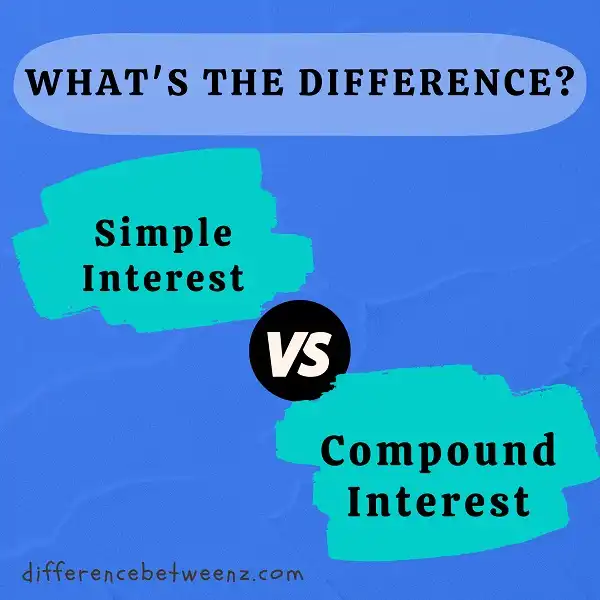In finance, there are two primary types of interest: simple and compound. Simple interest is a fixed percentage of the initial investment that is paid out on a regular basis. Compound interest, on the other hand, involves earning interest on both the original investment and any accumulated interest. This results in an exponential growth in the value of the invested capital.
What is Simple Interest?
Simple interest is a type of interest that is calculated based on the initial principal or the amount of money borrowed. It is not compounded, which means that the interest earned is not added to the principal. Simple interest is typically used for short-term loans, such as auto loans or personal loans. The formula for calculating simple interest is Interest = Principal x Rate x Time. For example, if you borrow $1000 at a 5% interest rate for one year, your simple interest would be $50. The important thing to remember with simple interest is that it does not compound, so your total debt will not increase as quickly as it would with compound interest.
What is Compound Interest?
Compound interest is a financial concept that describes the process of earning interest on investment returns, as well as using those accrued interest payments to earn even more interest in the future. This concept can be applied to a wide range of financial products and investments, including savings accounts, mutual funds, bonds, and even stocks. Compound interest is typically calculated using a simple formula that takes into account both the principal amount invested or lent out and the length of time over which it was invested. While this type of interest may seem like a small factor in overall investment success, it can make a big difference over time and has been used by countless investors to build substantial wealth.
Difference between Simple and Compound Interest
Simple and compound interest are two different types of interest that can be applied to loans or investments. Simple interest is calculated based on the original amount that is borrowed or invested, while compound interest is calculated using the original amount as well as any accumulated interest over time. Simple interest tends to be easier to calculate but typically results in lower overall returns, while compound interest can produce higher returns but requires more effort to keep track of.
Conclusion
When it comes to compound interest, there is no doubt that the power of compounding can be a huge advantage when it comes to growing your money. But what about simple interests? Is there still a place for this lesser-known investment tool? The answer is yes – simple interest can be an effective way to grow your money, especially if you are looking for a low-risk option. So which one should you choose? It depends on your specific needs and goals. If you want to maximize your earnings potential, go with compound interest. But if you’re looking for a stable investment with minimal risk, simple interest may be the better choice for you.


